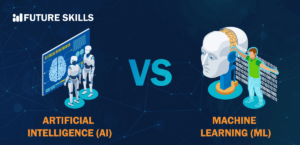 In today’s digital age, two terms are frequently mentioned in the realms of technology and innovation: Artificial Intelligence (AI) and Machine Learning (ML). While they are often used interchangeably, they represent distinct concepts with unique functionalities and applications. This article aims to clarify the differences between AI and ML, explore their interrelationship, and highlight their significance in various fields.
In today’s digital age, two terms are frequently mentioned in the realms of technology and innovation: Artificial Intelligence (AI) and Machine Learning (ML). While they are often used interchangeably, they represent distinct concepts with unique functionalities and applications. This article aims to clarify the differences between AI and ML, explore their interrelationship, and highlight their significance in various fields.
What is Artificial Intelligence?
Artificial Intelligence refers to the broader concept of machines or systems that can perform tasks that typically require human intelligence. AI encompasses a wide range of technologies and techniques designed to mimic cognitive functions such as learning, reasoning, problem-solving, perception, and language understanding. The ultimate goal of AI is to create systems that can operate autonomously and make decisions based on the information they gather.
Types of Artificial Intelligence
- Narrow AI: Also known as Weak AI, Narrow AI is designed to perform a specific task. Examples include virtual assistants like Siri and Alexa, recommendation systems on streaming platforms, and customer service chatbots. These systems operate under a limited set of constraints and are not capable of generalizing beyond their programmed functions.
- General AI: Also referred to as Strong AI, General AI aims to replicate human cognitive abilities. While this level of AI remains theoretical, it would involve machines that can understand, learn, and apply intelligence across a broad range of tasks, much like a human being.
What is Machine Learning?
Machine Learning is a subset of artificial intelligence that focuses on the development of algorithms and statistical models that enable computers to learn from and make predictions based on data. Instead of being explicitly programmed for every task, ML systems improve their performance over time through experience and exposure to new information.
Types of Machine Learning
- Supervised Learning: In supervised learning, the model is trained on a labeled dataset, where the input data is paired with the correct output. The algorithm learns to map inputs to outputs and can make predictions on unseen data. Examples include email spam detection and image recognition.
- Unsupervised Learning: Unlike supervised learning, unsupervised learning deals with unlabeled data. The algorithm identifies patterns and relationships in the data without specific guidance. Applications include customer segmentation and anomaly detection.
- Reinforcement Learning: This type of learning involves training models through trial and error. The algorithm receives feedback in the form of rewards or penalties based on its actions. Reinforcement learning is commonly used in robotics and game playing.
The Relationship Between AI and ML
While AI and ML are interconnected, they represent different aspects of the technological landscape. AI is the overarching discipline that encompasses various techniques, including ML. In other words, all machine learning is a form of artificial intelligence, but not all AI is machine learning.
To illustrate this relationship:
- AI is the broader concept, involving any system that can mimic human intelligence.
- ML is a subset of AI, focusing on the ability of machines to learn from data.
Example: AI Without ML
An example of AI that does not involve machine learning is a rule-based system. These systems use predefined rules and logic to make decisions. For instance, a simple expert system for diagnosing medical conditions may rely on a set of rules created by human experts. While this system exhibits AI characteristics, it does not learn or adapt based on new data.
Example: ML as a Component of AI
Conversely, consider a facial recognition system. This application uses machine learning algorithms to analyze images, learn from labeled datasets, and improve accuracy over time. Here, ML plays a critical role in enhancing the AI system’s capabilities.
Applications of AI and ML
Both AI and ML have transformed numerous industries, enabling innovation and efficiency. Some notable applications include:
- Healthcare: AI-powered diagnostic tools can analyze medical images, predict patient outcomes, and assist in treatment planning. Machine learning algorithms can process vast amounts of patient data to identify trends and improve care.
- Finance: AI and ML are used in fraud detection, algorithmic trading, and risk assessment. These technologies help financial institutions analyze patterns and make informed decisions.
- Transportation: Autonomous vehicles rely on AI and machine learning to interpret sensor data, navigate routes, and make real-time decisions to ensure safety and efficiency.
- Marketing: AI-driven tools analyze consumer behavior, enabling targeted advertising and personalized recommendations. Machine learning algorithms can segment audiences and optimize marketing strategies.
In summary, while Artificial Intelligence and Machine Learning are closely related, they serve different purposes within the technology landscape. AI is the broader concept encompassing machines designed to perform tasks that require human-like intelligence, while ML is a specific subset focused on enabling systems to learn from data. Understanding the distinctions and interconnections between AI and ML is crucial for harnessing their potential and driving innovation in various sectors. As technology continues to evolve, the relationship between AI and ML will undoubtedly shape the future of industries and our daily lives.




